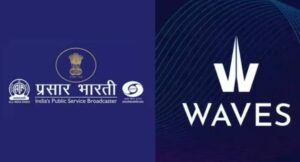The upcoming Union Budget 2025 is poised to play a pivotal role in expanding rural internet penetration in India, a critical step towards bridging the digital divide between urban and rural areas. As the government prepares to present the Union Budget 2025 on February 1, stakeholders in the telecommunications sector express optimism regarding potential policy measures aimed at enhancing infrastructure and reducing operational costs in rural India.
Current landscape of internet usage in rural India
As of early 2025, India is projected to have over 900 million internet users, with rural areas accounting for a significant portion of this growth. In 2024, rural users comprised 55 per cent of the total 886 million internet users in India, reflecting a steady increase in connectivity and digital engagement in these regions. The average Indian spends about 91 minutes online daily, with rural users averaging slightly less at 89 minutes. This trend indicates a growing reliance on digital platforms for various activities, including over-the-top (OTT) content consumption, social media interaction, and online communication.
Swati Bhargava, co-founder of CashKaro and EarnKaro, said, “As we anticipate Budget 2025, expanding rural internet penetration emerges as a critical lever for India’s burgeoning digital economy. With one of the fastest-growing 5G networks globally, India possesses a unique opportunity to leverage its telecom revolution for widespread economic and social progress. According to the Trai’s latest report, rural internet penetration in India currently stands at approximately 35 per cent, significantly lagging behind urban areas with penetration rates exceeding 70 per cent. This disparity hinders inclusive growth and limits the potential of millions of citizens.”
Factors driving internet adoption in rural India
Several factors contribute to the increasing internet adoption in rural areas:
Affordability of mobile data: The cost of mobile data has decreased dramatically, making it one of the most affordable markets globally. Prices have dropped by over 90 per cent since 2016.
Smartphone accessibility: With approximately 1.2 billion smartphone users in India, the availability of low-cost devices has facilitated greater access to the internet.
Regional language content: There is a rising demand for content in local languages, with 57 per cent of urban users preferring regional language content. This trend is crucial for engaging rural populations who may not be comfortable with English.
Government initiatives: Programmes like BharatNet aim to provide broadband access to all Gram Panchayats, significantly enhancing connectivity in rural areas.
“Enhanced rural internet connectivity will not only empower millions by providing access to education, healthcare, and financial inclusion but also unlock substantial economic potential. Studies by Cite research institutions like NITI Aayog, have shown that a 10 per cent increase in rural internet penetration can lead to a 1-2 per cent increase in GDP growth. This focused approach will serve as a cornerstone for realising the vision of a truly Digital India, where connectivity becomes a catalyst for equitable and sustainable economic development,” Swati Bhargava said.
Govt initiatives and previous Budget allocations
In the 2024 Union Budget, the Ministry of Communications received an allocation of Rs 1.28 trillion, which included provisions for enhancing telecommunications infrastructure and supporting initiatives like BharatNet. The focus on improving digital infrastructure has already yielded positive outcomes, with reduced internet costs leading to increased smartphone adoption.
Tarun Pathak, research director, Counterpoint Research, said, “The initial phase of the National Broadband Mission (NBM) did not fully achieve its intended objectives. Budget 2025 needs to consider allocating resources for the newly proposed NBM 2.0. The recent release of the vision document for NBM 2.0, which currently lacks specific budgetary allocations, indicates that the government is establishing a foundation for future investments.”
“Furthermore, the government is emphasising the Digital Bharat Nidhi (DBN) initiative to enhance the Intra-Circle Roaming (ICR) facility, which is critical for improving connectivity in rural and remote regions,” Pathak said.
Expectations from Budget 2025
The telecom industry anticipate several key measures from the upcoming Budget, including:
Tax rationalisation: Stakeholders are calling for reductions in import duties and other taxes that burden telecom service providers. This could free up capital for infrastructure investments and ultimately lower service charges for consumers.
Investment in digital infrastructure: Significant funds are expected to be allocated towards enhancing digital infrastructure, particularly in rural areas where connectivity remains a challenge.
Support for local manufacturing: Continued support for local manufacturing through tax incentives could lead to more competitively priced smartphones, making them accessible to a broader consumer base.
Steps to expand internet reach
To further enhance internet penetration in rural India, the government could consider the following steps:
Increase budget allocations for digital infrastructure: A substantial increase in funding for projects like BharatNet can ensure that all villages have reliable internet access.
Promote public-private partnerships: Encouraging collaborations between government and private telecom companies can lead to innovative solutions for expanding connectivity.
Enhance financial support for local manufacturers: Providing incentives for local smartphone manufacturers can help reduce device costs, making technology more accessible.
Focus on digital literacy programmes: Implementing educational initiatives aimed at improving digital literacy will empower rural populations to utilise internet services effectively.
Encourage content creation in regional languages: Supporting local content creators can drive engagement and ensure that more users find value in online resources.
In conclusion, the Union Budget 2025 holds significant promise for transforming India’s digital landscape, particularly in rural areas. By addressing key challenges such as affordability and accessibility through strategic investments and policy reforms, the government can empower millions of Indians and facilitate their integration into the digital economy. Business Standard









